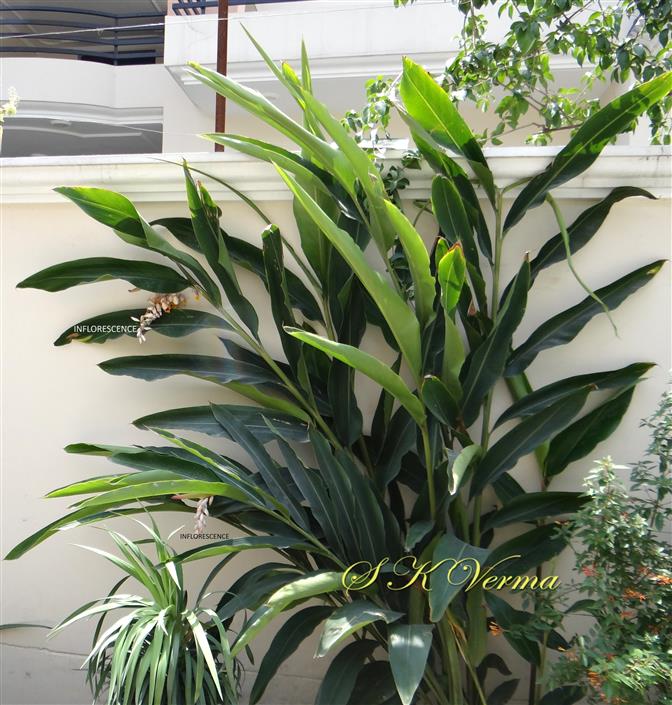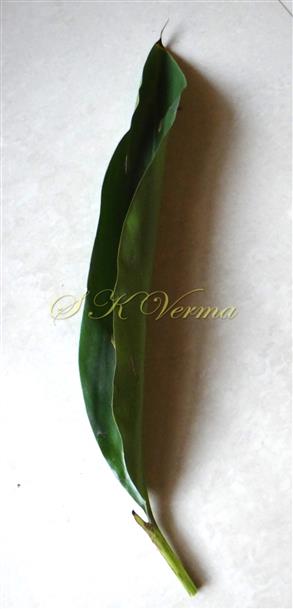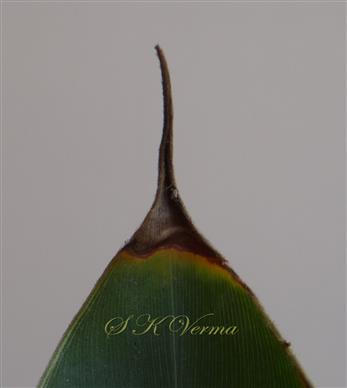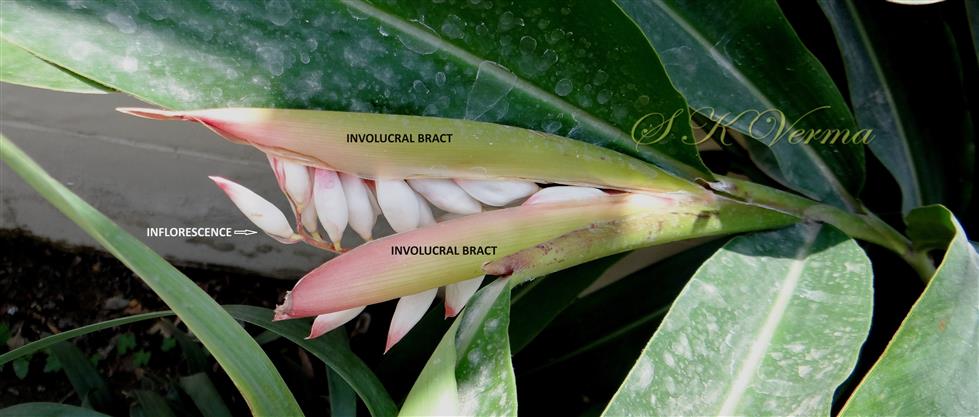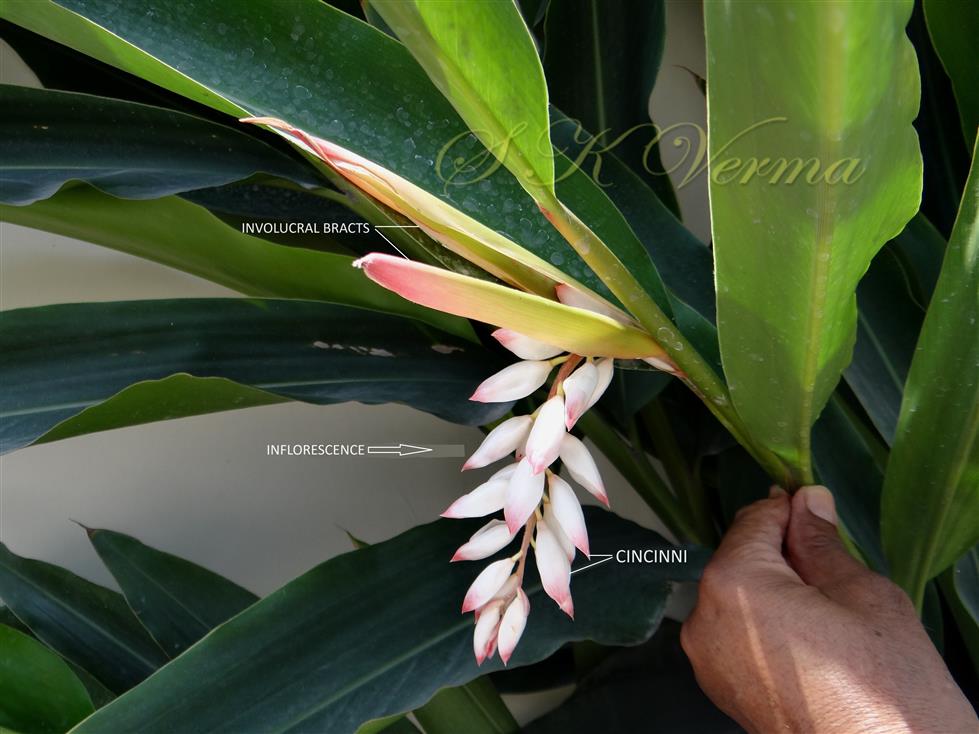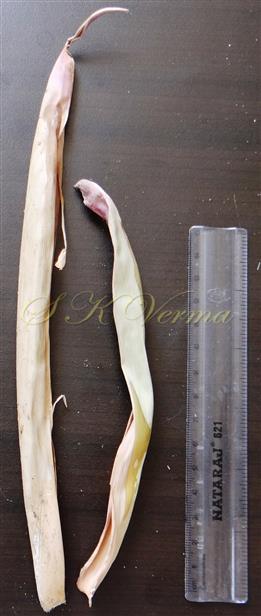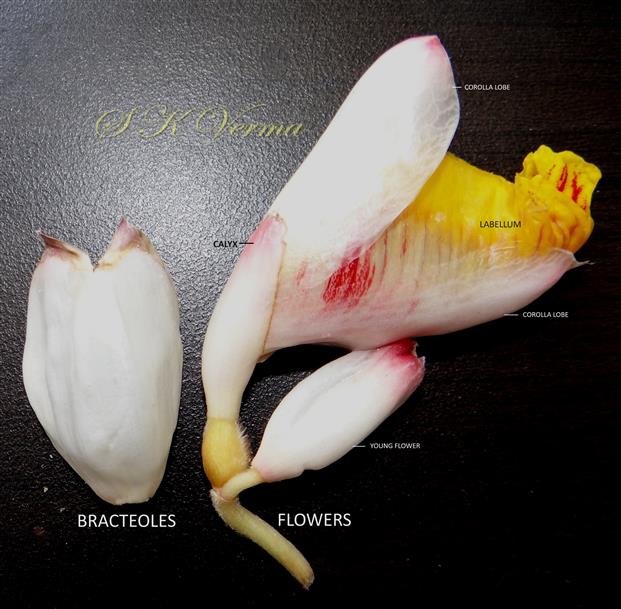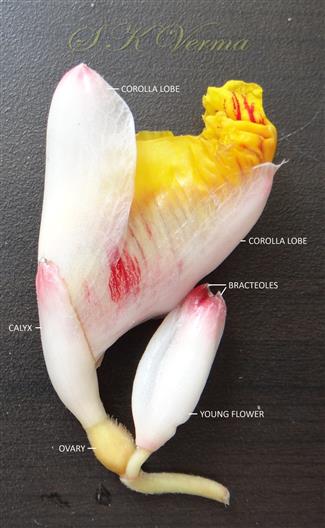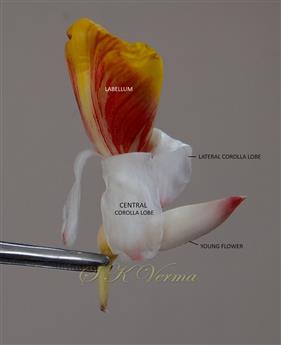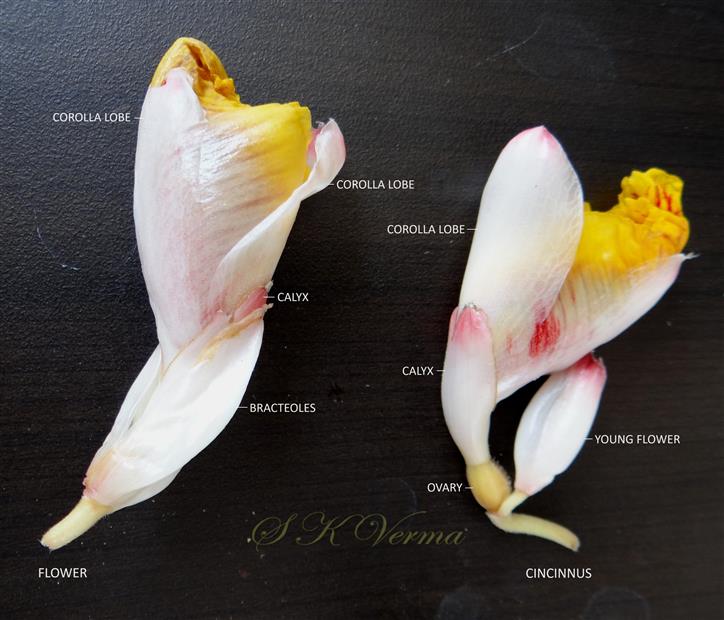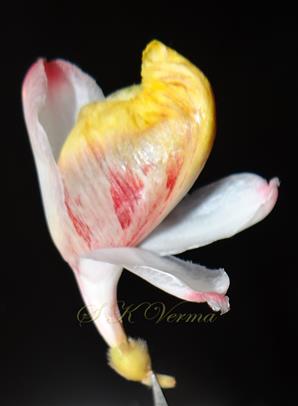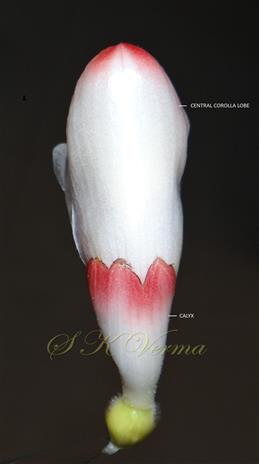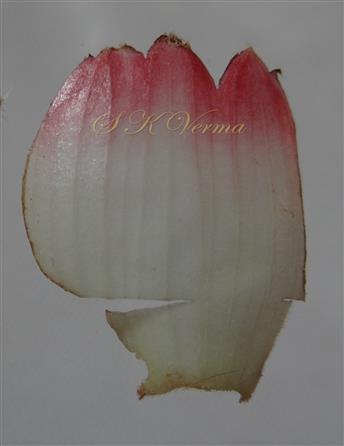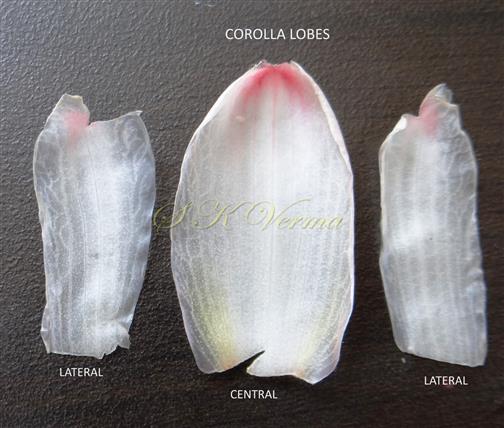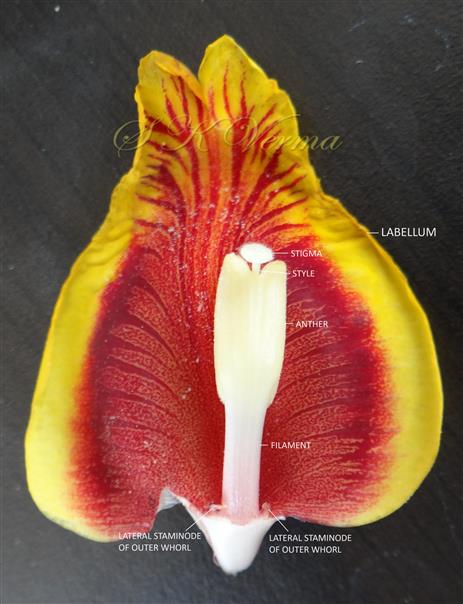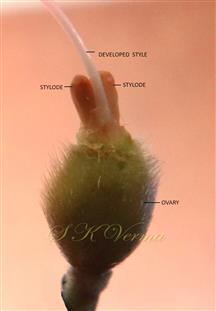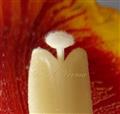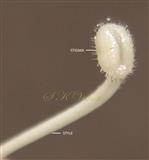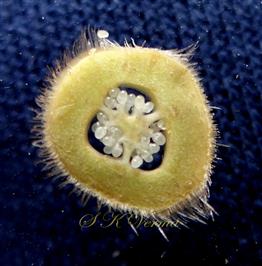ALPINIA
Alpinia
Roxb., Asiat. Res. 11: 350. 1810; Fl. China @ eFloras.org 24: 333; Fl. North Amer. @ eFloras.org 22: 308.
Rhizomes creeping, thick. Pseudostems many, well-developed, 1-3 m, rarely absent. Leaves many, rarely 1-4; leaf blade oblong or lanceolate. Inflorescence terminal panicle, raceme or spike projecting from tip of pseudostem, dense or lax, covered by 1-3 spatulate involucral bracts (when present); bracts (when present) open to base, each subtending one flower or a cincinnus of 2-many flowers; bracteoles open to base or tubular, rarely hooded, sometimes absent. Flowers bisexual, zygomorphic, epigynous. Calyx thin, usually tubular, sometimes split on 1 side, apex 3-toothed or 3-lobed. Corolla proximally tubular, distally 3-lobed, lobes oblanceolate to elliptical, central lobe +/- hooded, usually wider than lateral lobes. Stamens or staminodes 6, in 2 whorls; lateral 2 staminodes of outer whorl small or absent, subulate or tooth-like, adnate to base of labellum; median staminode of outer whorl reduced; labellum formed from 2 lateral staminodes of inner whorl often showy, usually larger than corolla lobes, ovate, tubular-incurved, notched, sometimes inconspicuous, margin variously lobed or entire; fertile stamen median of inner whorl; filament present or absent; connective crested or not. Ovary inferior, 3-locular, ovules many in each loculus, placentation axile; stigma usually well expanded, sometimes clavate, rarely geniculate; stylodes usually masssive. Fruit capsule or berry, usually globose, dry or fleshy. Seeds numerous, often angled, arillate.
245 species
Alpinia zerumbet
Alpinia zerumbet
(Pers.) B. L. Burtt & R. M. Smith, Notes Roy. Bot. Gard. Edinburgh. 31: 204. 1972; Fl. China @ eFloras.org 24: 336; Fl. North Amer. @ eFloras.org 22; Costus zerumbet Persoon, Syn. Pl. 1: 3. 1805. Zerumbet speciosum J. C. Wendl., Hort. Herrenhus. 4:3. 1801.
Rhizomatous perennials herb; rhizome creeping and thick. Pseudostems many, well- developed, 2-2.5 m, with many distichously arranged leaves. Leaves differentiated into basal sheath, petiole, blade and ligule; sheaths overlapping to form pseudostem, open on the side opposite to lamina; ligule 5-10 mm, abaxially hairy, apex obtuse, apiculate; petiole 1-5 cm; leaf blade lanceolate to narrowly elliptical, 30-75 cm x 5-15 cm, glabrous, margin pubescent, base attenuate, apex apiculate or acuminate. Inflorescence terminal panicle, panicle drooping, up to 30 cm long, lax, enclosed by 2 long involucral bracts (up to 26 cm) when young; rachis light purple-red, velvety; branches (cincinni) very short, 8-15 mm, white, velvety, 1-2(-3)-flowered; cincinnus with flower buds enclosed by ca. 3 cm long white, glabrous, shiny, tubular bract, split on 1 side to base; bracteoles enclosing flower buds, white with tubular, split on 1 side to base, 3-3.5 cm long, glabrous shiny. Pedicels small, ca. 4 mm long. Flowers bisexual, epigynous, zygomorphic, ca. 6 cm long. Calyx white, subcampanulate, ca. 2.4 cm long, split on 1 side; tube ca. 7 mm long, apex toothed. Corolla proximally tubular, distally 3-lobed; tube white, ca. 1.5 cm long, shorter than calyx; lobes milky white with pink apex, oblong; central lobe ca. 3.5 cm x 2 cm, larger than lateral ones ca. 3.2 cm x 1.2 cm. Stamens or staminodes 6, in 2 whorls; in outer whorl 2 lateral staminodes small, subulate, adnate to base of labellum, median staminode reduced or absent; labellum showy, formed from 2 lateral staminodes of inner whorl, larger than corolla lobes, 4-6 cm, broadly ovate, tubular-incurved, yellow with purple-red stripes, apex bifid, crisped; median stamen of inner whorl fertile; filament flat, ca. 1.8 cm x 0.3 cm; anther ca. 1.4 cm long, bithecous, introrse, dehiscence by longitudinal slits; connective without spur and crest. Ovary inferior, ca. 8 mm x 6 mm, golden yellow, hirsute, 3- locular, ovules numerous per loculus, placentation axile; developed style 1, filiform, placed in a furrow in filament and between anther thecae; stigma appearing above anther, funnelform, margin ciliate; stylodes 2, reduced to nectaries at apex of ovary.
Capsule vermilion globose, ca. 2 cm in diameter, ribbed, apex with persistent calyx. Seeds angled. (Fruit not observed)
Common Names: Shell Ginger, Light Galangal, Pink Porcelain Lily
